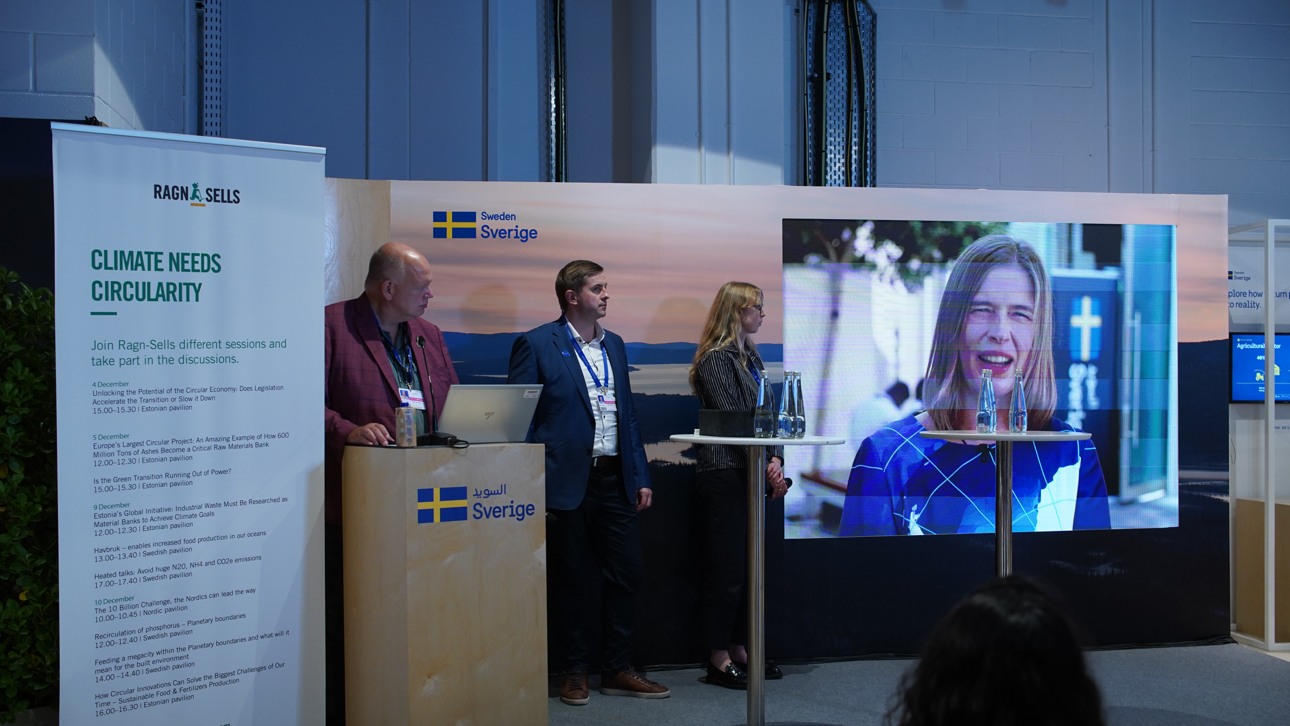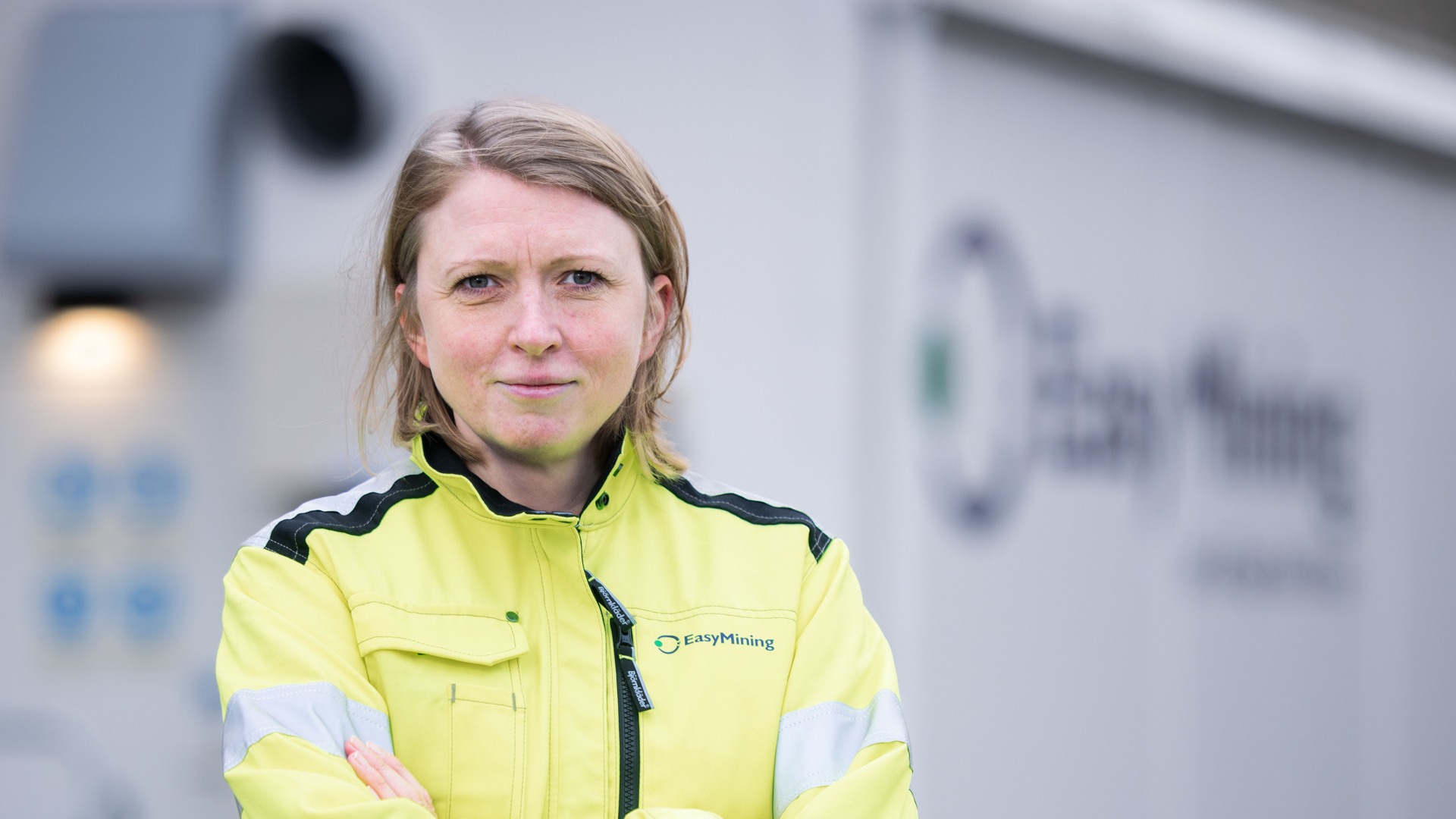
Nitrogen recovery: a path for climate action & more
A recent seminar addressing climate change put the growing danger of nitrous oxide emissions front and centre. It also underscored reclaiming nitrogen from wastewater as a potential solution and even part of a wider circular transformation.
20 Mar 2024While carbon dioxide is the greenhouse gas that usually gets all the attention, it shared the spotlight with nitrous oxide in a seminar at the United Nations' 2023 climate change conference COP28 in Dubai. Hosted at the Swedish Pavilion on December 9, “Heated talks: Avoiding Huge N2O and CO2 Emissions” focused on ways for reducing both greenhouse gases and highlighted how N20 emissions are becoming an increasing problem around the world.
The seminar began with a presentation from Professor N. Raghuram of the Centre for Sustainable Nitrogen and Nutrient Management in New Delhi, who noted that the major sources of N2O emissions are agriculture activities and a mix of other processes that include wastewater treatment.
– In the Indian nitrogen assessment, we have shown that the annual compounded growth rate of nitrous oxide generation between 2000 and 2010 is four to five times higher than the annual compounded growth rate of nitrous oxide production from agricultural soils due to unutilized fertiliser, manure, or urine. This means that wastewater can increasingly become a bigger menace than agricultural losses of nitrogen, he explained.
For Pär Larshans, Chief Sustainability Officer at Ragn-Sells – who was moderating the discussion – the potential impact of wastewater treatment surpassing agriculture in emissions of N2O (which are 250-300 times as potent as CO2 emissions) was clear.
– If something is not done, we will have a huge problem with global warming. So we need to act. That was my reaction when I saw these numbers. And of course, there is a challenge. And that challenge is not only in India, it's global, he said.
Recovering nitrogen from wastewater
According to Professor Raghuram and other panel members at the seminar, removing nitrogen at wastewater treatment plants offers a viable avenue for limiting nitrous oxide emissions. And the technology – such as the Aqua2N process from the Ragn-Sells subsidiary EasyMining – already exists.
Another presentation that was part of the “Heated talks” featured Anna Lundbom, Marketing and Product Sales Manager at EasyMining, describing how Aqua2N is able to recover 95% of the nitrogen from wastewater streams.

Anna Lundbom, Marketing and Product Sales Manager at EasyMining.
Recycling the nitrogen in wastewater streams offers a sustainable alternative to traditionally linear methods of extracting from the air the critical component for fertilisers, which demand extreme energy and release a high amount of greenhouse gases.
– With this process, we lower the nitrogen load in wastewater treatment plants at the same time as we produce a nitrogen product that can be used in agriculture as fertiliser. We also reduce the climate footprint by not releasing any nitrous oxide, Lundbom explained.
Technology like Aqua2N can do more than reclaim nutrients from wastewater treatment plants. It can also contribute sustainable and renewable energy as a source of biogas. It’s all part of an ongoing paradigm shift in where to look for resources. One that views waste — all waste, not just wastewater — as a rich source to be tapped.
Becoming more circular by ‘mining waste’
The seminar also featured Kersti Kaljulaid, the former President of Estonia and current board member at the Stockholm Institute, who spoke through pre-recorded comments on ways to encourage more circularity in society.
According to Kaljulaid, embracing circular technologies like Aqua2N is a cost-effective and strategic approach for the future. Citing Sweden as an example of a country where “mining waste” is the more cost-effective option, she noted that pricing schemes could be used to stimulate similar innovation in other sectors.
– For example, in Estonia, we have had oil shale mining for a long time. There are lots of raw materials that can be re-mined from the waste there. And if we assign a price to bringing fresh materials into this circulation, which is far higher than their reuse, then we will achieve [circularity], she explained.